It’s difficult to believe that it was two years ago today that we started the Curbstone Valley Farm blog, and I can think of no better way to celebrate than with our bees and blooms in the gardens this month, many of which weren’t here two years ago.
Similar to last year, it still feels like we’re waiting for summer to arrive here along the coast. Mornings are punctuated by low-hanging cool coastal fog, with mild afternoon temperatures and light coastal breezes. Much more like June than August. There’s no question the vegetable garden has been set back by the lack of warm weather, but the flowers don’t seem to be in the least bit perturbed by the unseasonably cool weather.
This morning in the herb garden the bees were busily working over the oregano blossoms for their nectar.
Early in the spring, the fennel in the herb garden was highly attractive to ladybugs, and numerous larvae were sighted among the foliage. Now that it’s mid-summer, we’ve allowed some of the fennel to bloom for the bees and syrphid flies who are particularly attracted their flowers.
Someone even has laid some eggs on the fennel flowers, I wonder who?
We’ve also allowed some dill to bloom, so we can harvest seed in a few weeks.
Like last year, the bee balm (Monarda lambada) is especially interesting to the native bumble bees.
Also in the herb garden, the hyssop is constantly humming with honey bees.
Most of the native flowers are past their prime for the season. Our volunteer Clintonia andrewsiana finished flowering some time ago. Last year we hoped it would set seed, but it didn’t. This year though it looks as though I may have a chance to propagate at least a few.
I was surprised to still find some of our native honeysuckle (Lonicera hispidula) blooming in the orchard.
Most of the native honeysuckle is setting fruit, not flowers.
Also in the orchard the native rosy buckwheat (Eriogonum grande var. rubescens) has been blooming for the past few weeks, and is only just now showing signs of winding down for the season.
As summer transitions toward fall, the native asters (Symphyotrichum chilense) are slowly popping up across the slope.
Occasionally the asters can be found intermingled among the buckwheat blooms.
This year our native Western Verbena (Verbena lasiostachys) is thriving, and blooming profusely, much to the delight of native and honey bees alike.
The cooler weather is probably responsible for the continued flush of penstemon blooms, both from the Penstemon heterophyllus ‘Margarita BOP’,
and from Penstemon spectabilis, both new additions this year.
Although not quite as spectacular in bloom as I’d hoped, it is a young plant, and hopefully will fill in as it matures.
I went somewhat crazy with the native sages this year, planting numerous white sage plants (Salvia apiana), purple sage (Salvia leucophylla), and a few Cleveland sage hybrids too. Most of the ‘Allan Chickering’ hybrids are almost done for the season, but this one on the orchard slope was ‘rescued’ from a snapped stem earlier this spring.
A little rooting hormone, and some damp sand, and the stem quickly rooted, and has now grown to be about 2 feet tall and wide, and is currently amass with beautiful purple flowers.
Allan’s cranky cousin, ‘Winifred Gilman’, has proven to be somewhat more uppity in our gardens. So much so that I’ve succeeded in killing a few outright this year, but one robust specimen survived our strange winter snow, and rampant spring rainfall, and despite summer’s persistent fog she’s finally blooming again.
Now I remember why I planted her in the first place. Although similar in appearance to Allan, Winifred’s flowers are a much more vibrant color. That said however, I’m honestly not sure she’s worth the struggle to grow here. I do expect we’ll see a lot more of Allan though.
The native coyote mint (Monardella villosa) has been attracting all sorts of butterflies, bees, and hoverflies, and we’re hoping that over the next couple of years these plants will also spread and fill in to provide a more impressive mass of blooms in future seasons.
The sticky monkeyflowers and deerweed that have been blooming for weeks are finally sliding into their mid-summer dormancy…
but they are now being replaced with vibrant eye-catching reds of various Zauchnerias (Epilobum sp.).
Although these red flowers will not be of much interest to bees, our Anna’s hummingbirds will no doubt enjoy their presence through late summer and fall. I’m particularly pleased with the low growing variety ‘Everett’s Choice’ with it’s gray-green foliage, and vibrant red flowers.
We’re occasionally reminded that our native Navarretia squarrosa is blooming around the edge of the orchard at the moment. When stepped on, the aroma of the crushed stems leaves no question how this plant acquired its common name…’skunkweed’.
The native cudweeds have had an impressive showing this year, with many plants growing more than twice the height they grew last year, perhaps a result of our late spring rains.
We still see an occasional native poppy in bloom, but most are now setting seeds for next year’s plants.
The goldenrods aren’t quite flowering yet, but are sending up their flower spikes, with the promise of some early fall splashes of yellow across the slope.
In the meantime, the bees are busy with some of the non-native flowers in the cultivated areas, including Lavandula intermedia ‘Provence’ which is in full bloom at the moment. This is one of the best culinary lavenders, but also excellent for potpourri, soap and candlemaking. Its scent is easily appreciated throughout the garden, especially while standing just upwind of a light breeze.
Another non-native, Coreopsis grandiflora ‘Early Sunrise’, is providing a welcome splash of golden yellow flowers around the edge of the vegetable garden.
Mid to late summer of course is prime time for the sunflowers to show off. Our Lemon Queen sunflowers were the first to bloom, and now provide an additional pollen source for the bees.
In the early morning they look just as beautiful when backlit from behind.
The Autumn Beauty sunflowers are just coming into their own too.
These are my personal favorite.
Perhaps the most pervasive yellow blooms at the moment though are the dandelions. Although many gardeners would gasp at the sight of a dandelion in flower, we allow ours to bloom.
The plants really aren’t particularly intrusive, they provide food for the bees, and I rather like the look of their little yellow heads dotting the meadow.
Speaking of weeds, as we’ve been otherwise distracted of late, I was remiss in pulling all of the invasive bull thistles again this year, but at least someone is enjoying my oversight.
It’s difficult to believe that autumn will be upon us soon. Although the spring and early summer native flowers have mostly faded, after experimenting with a number of new native annuals and perennials this season (and a few well behaved non-natives), we’re excited to start planning our fall plantings for this year. Although we’ll avoid adding swathes of annual wildflowers, at least until the meadow voles are under control in the orchard, there’s no question that we’ll add more native sages, and sulfur and rosy buckwheats. I think we’ll plant more Penstemon ‘Margarita BOP’ too. The bees have been busy with all of them for most of the season, and we hope to add a few manzanitas this winter to provide a late season source of nectar. Who knows what else we might find blooming this time next year!
————-
(For a look back at our first year review, see here).

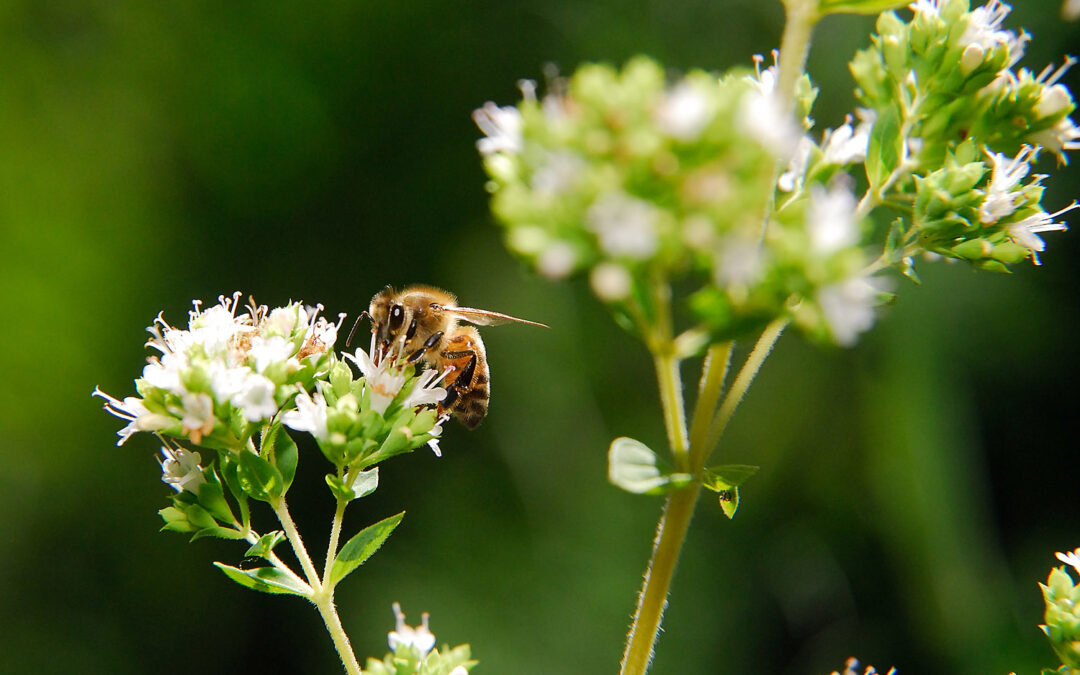
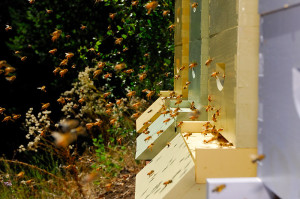


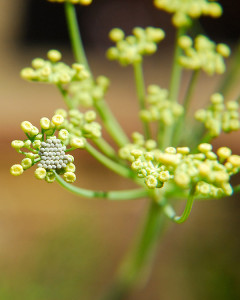
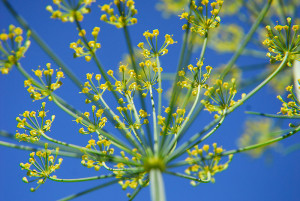
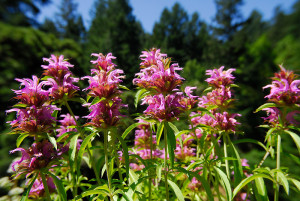
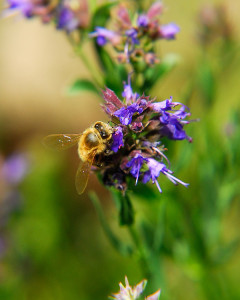
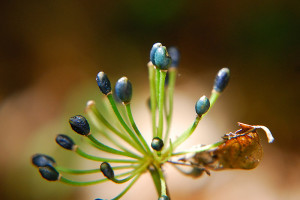
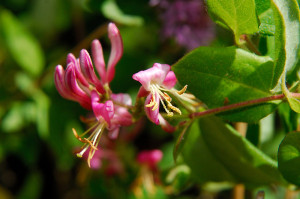
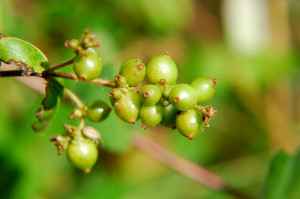
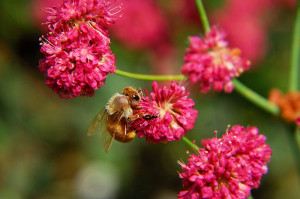


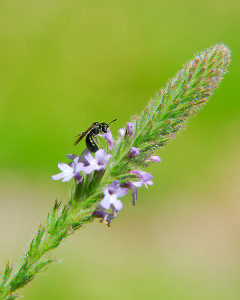
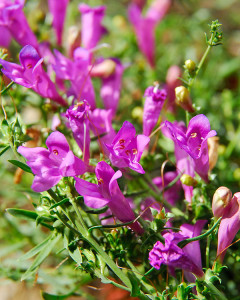

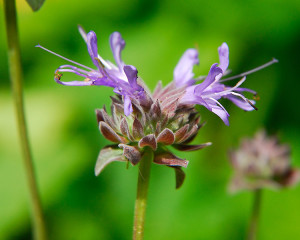
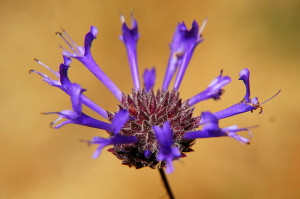
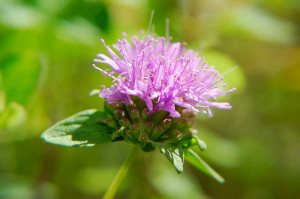
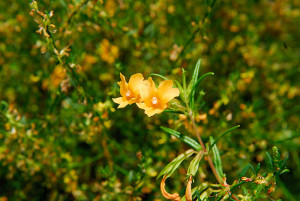
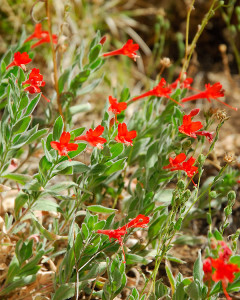
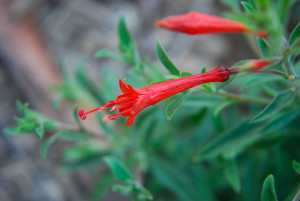
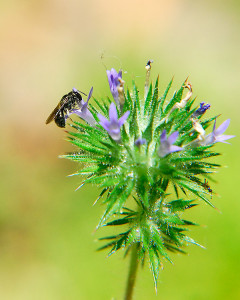
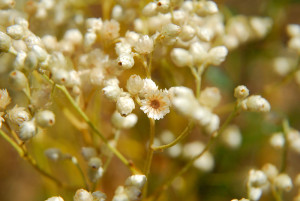
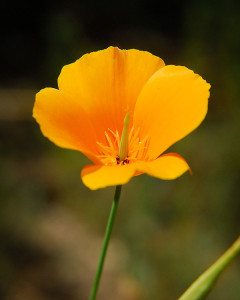
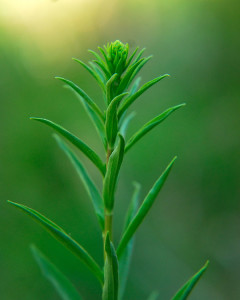
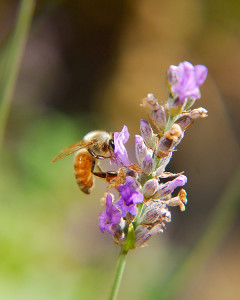
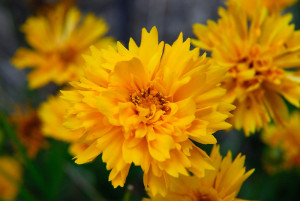
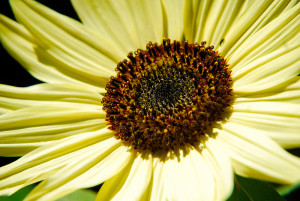
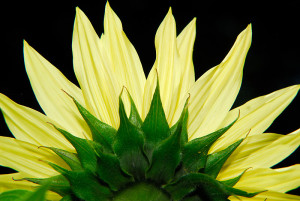
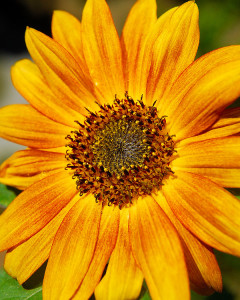
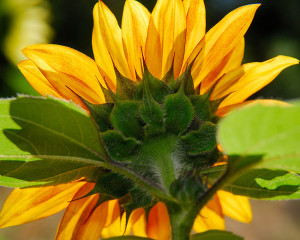
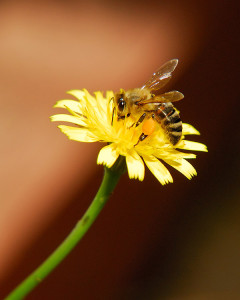
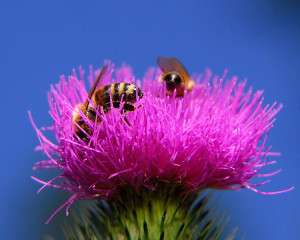







How nice to have so many blooming plants now. I’ll have to check and see what there is mid month.
It’s nice to see your pink Honeysuckle and the coyote mint, sunflowers…all of them. I tried a yellow monkeyflower this Spring, Clare, and have determined to plant one by each Cleveland sage, they are that pretty together!
Clare,
Lots of cool things in bloom there! In our part of the country
dandelions are considered a main nectar source for bees. That Salvia ‘Winifred Gilman’ is a stunner!
Going for 101 degrees again tomorrow, tonight we had the biggest orientation flight yet, heard the bees from 60 foot away they were that loud.
Great Combination: flowers and bees, especially if the bees are yours. You have such a variety of plants. Your cooler weather sounds wonderful, for we have been sweltering in the heat–90s+. Our garden has suffered in the heat, especially my green peppers. We are hoping that cooler weather will improve production. Your bees are doing wonderfully. Have you harvested honey yet?
Wonderful photos – You’ve had more flowers than we have – but my Win. Gilman is doing great – planted last fall, wonderful display this year – we’ll see how she ages! Congrats on two very full years!
Don’t mention the A word Clare unless it’s apiary. Still in meadow flower flushed mode with these delightful visions of wildflowers and pollinators. That top image of the beehives is astounding.
What a lovely way to celebrate your blog and garden…so many beautiful blooms and pollinators….
Happy 2nd blogaversary! What beautiful flowers you have blooming now. I especially love the pic of the asters and buckwheat. How nice that in two years you’ve introduced so many natives and pollinators to your farm. Congrats.
Congratulations on two years! I also like sage and get carried away with it in the garden. It is so fragrant, great for cooking and teas, and has such a lovely fragrance.
Happy (belated) Blog Birthday! Keep up the good work – I always love reading your blog. I swear, I can smell the good ‘ol Central Coast air when I do! 🙂
Very nice review! I am excited to see the zauchneria here – I am quite sure that’s what I planted in a client’s garden one year and was shocked to see it survive the winter, and happily (but I couldn’t remember its name, until now – thanks!). I haven’t seen it offered in garden centers in PA except that once, and I imagine they are really not well suited to our climate, but I really, really loved that plant (as did the hummingbird).
And congrats on 2 years – you’ve put a lot of really high quality content on California natives (and many other things!) out there.
Happy ‘bees and blooms’ and 2nd blog birthday 🙂 As always, a beautiful/informative post, Clare. We are so lucky that you share!
Happy Anniversary!
Great shot of the bees and their landing strips! I confess I like to stand at the side of our hive and just watch sometimes. I’d pull up a chair if there weren’t so many things to be done this time of year.
We already have a lot of ‘bee-friendly’ flowers but we’re trying to add a few more. Our bees love the Agastaches and most everything else from the mint family. Which works out well because so do I!
Congratulations Clare on the anniversary. You certainly have a great nectar larder there for the bees. My golden rod has started flowering here though that’s about all that I recognise from your beautiful display of flowers.
I enjoyed seeing all your lovely native flowers. Your photos are great! I am sure your bees are very happy. You have done a lot to create a habitat that nourishes both man and wildlife, and you are an inspirtion to many of us. Congratulations on your two year blogoversary! That, too, is an accomplishment worthy of praise. I have enjoyed reading about your adventures at Curbstone Valley and look forward to many more.
I loved the photo of the bees coming and going at the hives. They are all so dedicated looking and really I think happy at their jobs. Team spirit. And to think of the honey…
Congratulations on two years at Curbstone. I love it that you’re planting California native plants and promoting the native pollinators. I have Winifred Gilman also. One out of two of those plants died, but I’m having really good luck with bloodflower, a type of narrow-leaf milkweed that Monarch butterflies love. It’s seeding like crazy, and I’m transplanting it into various places in the yard to promote butterflies.
A belated Happy Blogaversary, Clare. I can see why Winifred might be worth a little extra effort; what a stunning color! -Jean